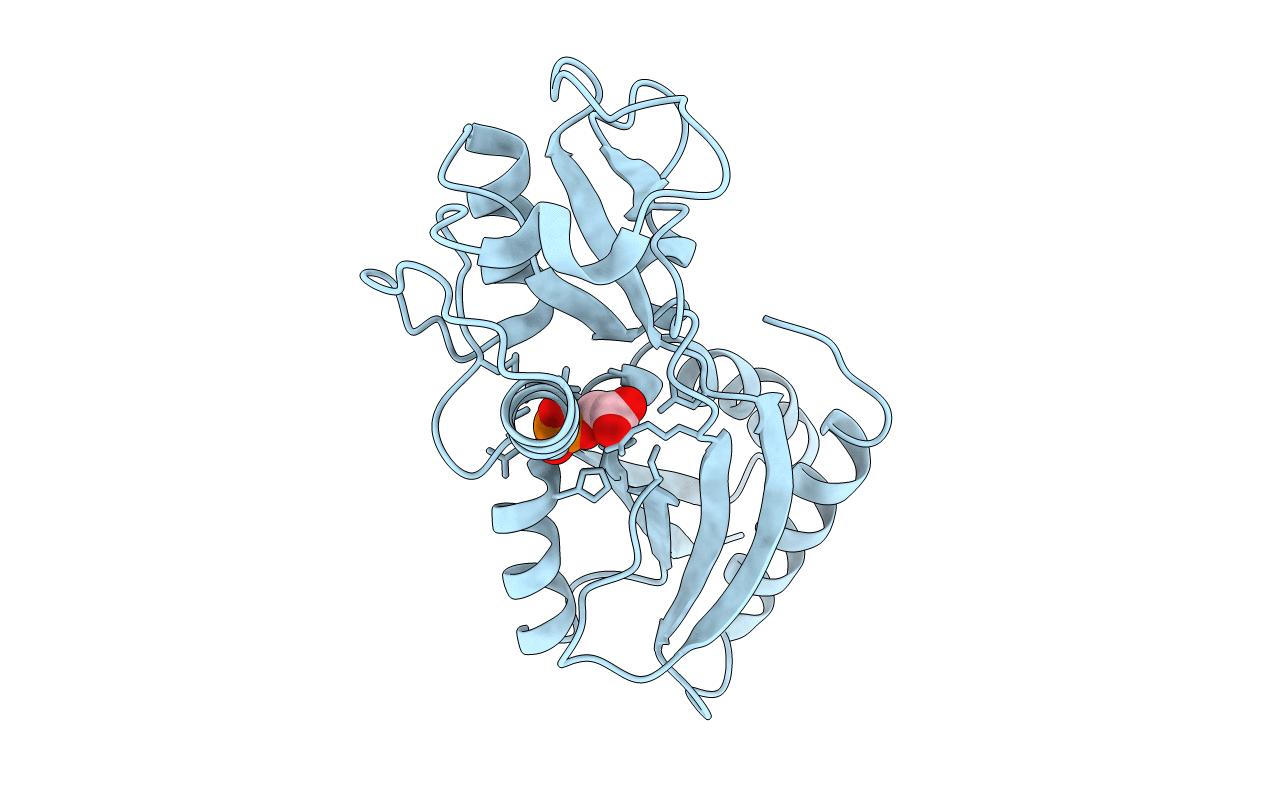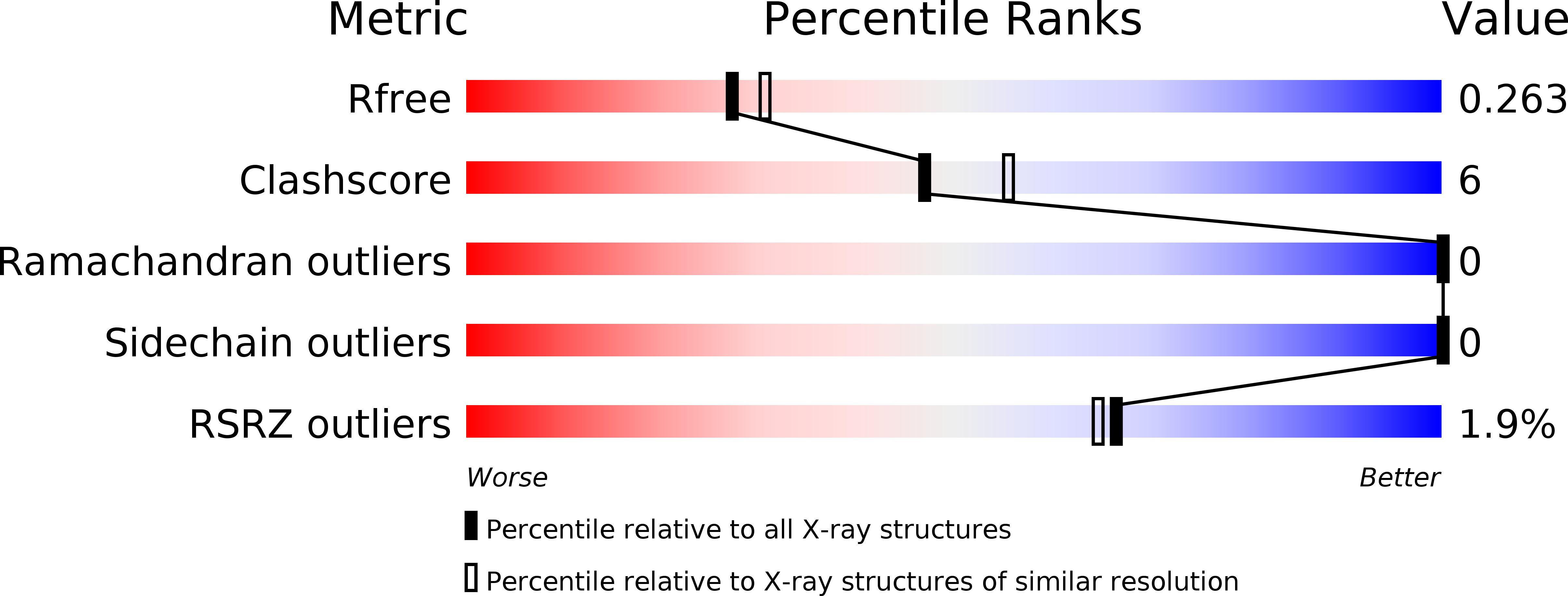
Deposition Date
2017-07-27
Release Date
2017-12-27
Last Version Date
2023-11-22
Entry Detail
PDB ID:
5Y2W
Keywords:
Title:
Structure of Synechocystis PCC6803 CcmR regulatory domain in complex with 2-PG
Biological Source:
Source Organism:
Synechocystis sp. (strain PCC 6803 / Kazusa) (Taxon ID: 1111708)
Host Organism:
Method Details:
Experimental Method:
Resolution:
2.20 Å
R-Value Free:
0.25
R-Value Work:
0.20
R-Value Observed:
0.20
Space Group:
P 31 2 1


